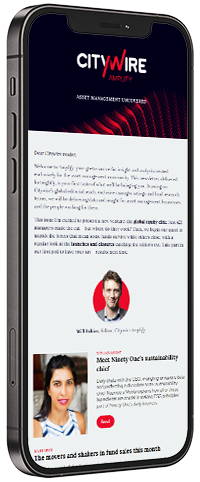There might be light at the end of the tunnel, but it ain’t here yet.
Want selectors to seed your funds? Here’s how
Latest Newsletter
Value stance rewards managers with first AAA rating
The year comes to a close with a host of managers gaining their AAA wings.
Real Life: A cheaper, smarter way to fly business to the US
Companies are clamping down on travel costs. Here’s how to travel in comfort while keeping the expenses department happy.
Community
Funds need capital. That’s a simple fact. If they don’t have money to invest, then they won’t get very far. But new ideas often rely on seeding to enable them to get off the ground in the first place. So, what do selectors look for when potentially seeding a fledgling fund?
TL;DR
- Track records can be approached more pragmatically…
- … but a three-year record would always be preferred.
- The old €100m threshold remains true but can be discussed.
- Fears over being left ‘holding the bag’ never go away.
For Ian Aylward, head of manager selection and responsible investing at Barclays Wealth and Investment Management, there are several benefits to accessing a fund at inception, or its seeding stage.
‘We have seeded five new funds in the past couple of years. We find it a good way of adding value for clients – securing a reduced fee in exchange for helping to launch a fund. The funds are usually across a range of strategies, but liquidity is always a key consideration for us – we want to be sure that we can easily exit our significant position should conditions change.’
Aylward is careful to make an important distinction – he will seed new funds, but not new strategies. By that, he means there is potential for a new vehicle from a known manager with a strong track record which is either being tweaked, evolved or expanded on, but a completely new idea is less compelling.
This is the same case for Khaled Boudokhane (pictured below), head of long-only multi-management at Candriam, who said they don’t do any direct seeding but do look at newer propositions, albeit with a lot of constraints on their selection potential.
‘You need to be able to prove that the manager you are looking at has done a similar portfolio or a sleeve of a bigger fund.’ There are instances where a waiver can be created to allow investment in a known manager with a fresh fund but, as with Aylward, the word ‘known’ is doing a lot of heavy lifting.

Buyer beware
For the majority of pan-European fund buyers I spoke to on this topic, two adages hold true: ideally, the fund would already have three years of track record and/or (preferably ‘and’) be at or above €100m in assets before they dip their toe.
One asset management boutique’s deputy chief explained it succinctly: ‘We can do an element of seeding ourselves. Not to say we would kick it off with €100m from inception but we can make it more attractive. That said, if the fund only has one year’s track record, we can’t go out and buy two years of track record from somewhere else and inject it into the fund.’

If three is, indeed, the magic number, what could allow selectors to go outside of these parameters? Aylward (pictured) said Barclays was not rigidly bound by these old metrics. However, they will hunt out similar strategies run by the portfolio management team which have been in existence for a longer period, ideally more than three years, for comparison purposes.
‘We would be able to invest in funds with small assets under management, but we always conduct ongoing liquidity analysis to ensure we’re investing to such a scale within a fund where we are able to exit in a timely manner, should it be required.’
Others, however, are much more tightly bound. A selector at a large European group, who wished to remain anonymous, said: ‘We are constrained especially around the size aspect, as we are strong proponents of diversification. If we are looking at a fund which has less than €100m then we are potentially reducing the diversification of the wider portfolio. That is a challenge.’
Another fund buyer, who also asked not to be named, said there is continued concern about being left ‘holding the bag’, should a new fund fail to catch fire with a wider investor base.
‘We have seen a lot of funds come to market in recent years – I am thinking primarily in thematics – which are very hot and very exciting,’ the selector said. ‘But then, after the initial excitement, they plateau below €100m when our seed capital was designed to help build it up and not become a cornerstone.
‘That becomes a worrisome place to be, as a drop in performance or other investors redeeming, leaves you with a big position that you are then unable to divest. That makes us, and I think it is fair to say that other investors, more nervous about seeding new ideas, especially in the thematic areas.’
Latest Newsletter
Amplify Issue 30: The fund groups topping the tree
We analyse which groups have had the biggest inflows and outflows in 2022, look at managers achieving their first AAA ratings, and hear from Rob Kyprianou on why regulation gets it back to front.
Amplify Issue 29: Red hot: 2022’s private market hiring spree
2022 has been a hot year for private markets, but are asset managers putting the brakes on their expansion efforts? Plus, we look at how the bear market has affected launches this year and look at how firms can better communicate their brand values.
Amplify Issue 28: Fill your ESG product gaps
We hear from fund buyers on what they’re looking for from an ESG fund, find out what Neuberger Berman is plotting in the alts world, and learn the winners of Citywire’s Gender Diversity Awards.
Community
